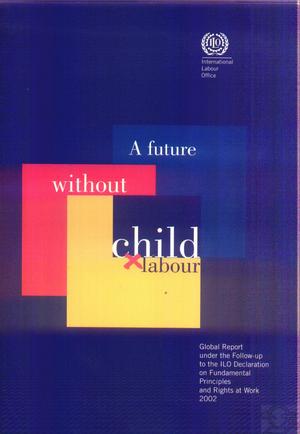 |
 |
 |
A future without child labour
|
Book : A future without child labour Language : English Library : Child Labor Publish Place : Geneva ISBN : 92-2-112416-9 ISSN : 0074-6681 Publish Date : January 2002 Publisher : International Labour Office (ILO) Book Type : Report Book Number : 2090 |
 |
INDEX
ContentsExecutive summary Introduction
Part I. Child labour: A dynamic global picture
1. Child labour: What is to be abolished, and why? . . A long history of ILO work against child labour . . . What do we want to abolish?
The worst forms of child labour
Evolving attitudes towards children
2. The size and shape of the problem in 2002
The challenges of measuring child labour
The number of child labourers in the world today . .
Methodology for estimation
Global estimates
Estimates of economically active children
Can we compare the new and the old estimates of working children?
A What do the estimates tell us about
child labour in the world today?
A better grasp of the shape of the problem
The sectors in which children work
Domination of the informal economy
Child labour in agriculture
Child labour in fishing
Child labour in the urban informal economy: Street children.
Child labour in manufacturing: From factories to home-based work
Child labour in tourism
Children in domestic service
Child labour in construction, mining
and quarrying
The unconditional worst forms of child labour. . .
Forms of child slavery such as sale
and trafficking, debt bondage, serfdom
and forced or compulsory labour.
Forced recruitment of children for use
in armed conflict.
Commercial sexual exploitation of children . . Children in illicit activities
3. Child labour and development shocks
Economic and financial crises
Countries in transition
The HIV/AIDS pandemic
Natural disasters and child labour
Armed conflict and child labour
4. Understanding child labour:
The foundation for effective abolition
Causes act at different levels
The demand for child labour.
Household decision-making about child labour
Demographic change
Parents and children on the move
The role of social protection
Education and child labour.
Conclusion
Part II. The global response to child labour:
Turning indignation into action.
1. Better information means stronger action
The ILO and child labour research
Research challenges and innovations
Monitoring child labour
Strengthening research capacity
2. International action to support national partners . . . The framework for action by the ILO
International labour standards and technical cooperation: Complementary approaches
The International Programme on
the Elimination of Child Labour (IPEC):
A decade of experience
From country programmes to time-bound programmes
Child labour in other ILO programmes
Mainstreaming child labour in poverty
reduction strategies.
International action for children's rights
Interagency cooperation
International action on education.
International action on youth employment
International action to combat transnational problems
Regional cooperation against child labour 3. National governments in the front line
The policy framework for the abolition
of child labour
Institutional arrangements to support the abolition of child labour.
The legal framework.
Birth registration
Basic social services provision.
4. Action against child labour: A review
of experience
Partnerships for effective action
The social partners and tripartite action . . Tripartite cooperation
Collective bargaining
Employers and their organizations
Workers' organizations
Other partners in civil society
Good practices in the abolition of child labour
Important lessons learned in the fight against child labour
Typology of interventions against
child labour
Advocacy and social mobilization
Good education systems can prevent child labour
Social protection to prevent child labour . . Rescue and rehabilitation
How to tackle hazardous work
Demobilizing child soldiers
Legislation, enforcement and monitoring of child labour
What makes for effective assistance
Part III. Towards an action plan for the effective abolition of child labour
1. Child labour and the Decent Work Agenda.
2. Possible contours of an action plan
Reinforcing the work of IPEC
Advocacy
Research and policy
Technical cooperation
Mainstreaming the effective abolition
of child labour in the Decent Work Agenda
Forging closer partnerships.
Suggested points for discussion
Annexes
1.ILO Declaration on Fundamental Principles and Rights at Work and its Follow-up.
2. Table of ratifications of ILO Conventions
Nos. 138 and 182 and annual reports submitted under the Declaration follow-up in relation to the effective abolition of child labour
3. List of countries involved in the International Programme on the Elimination of Child Labour (IPEC)


